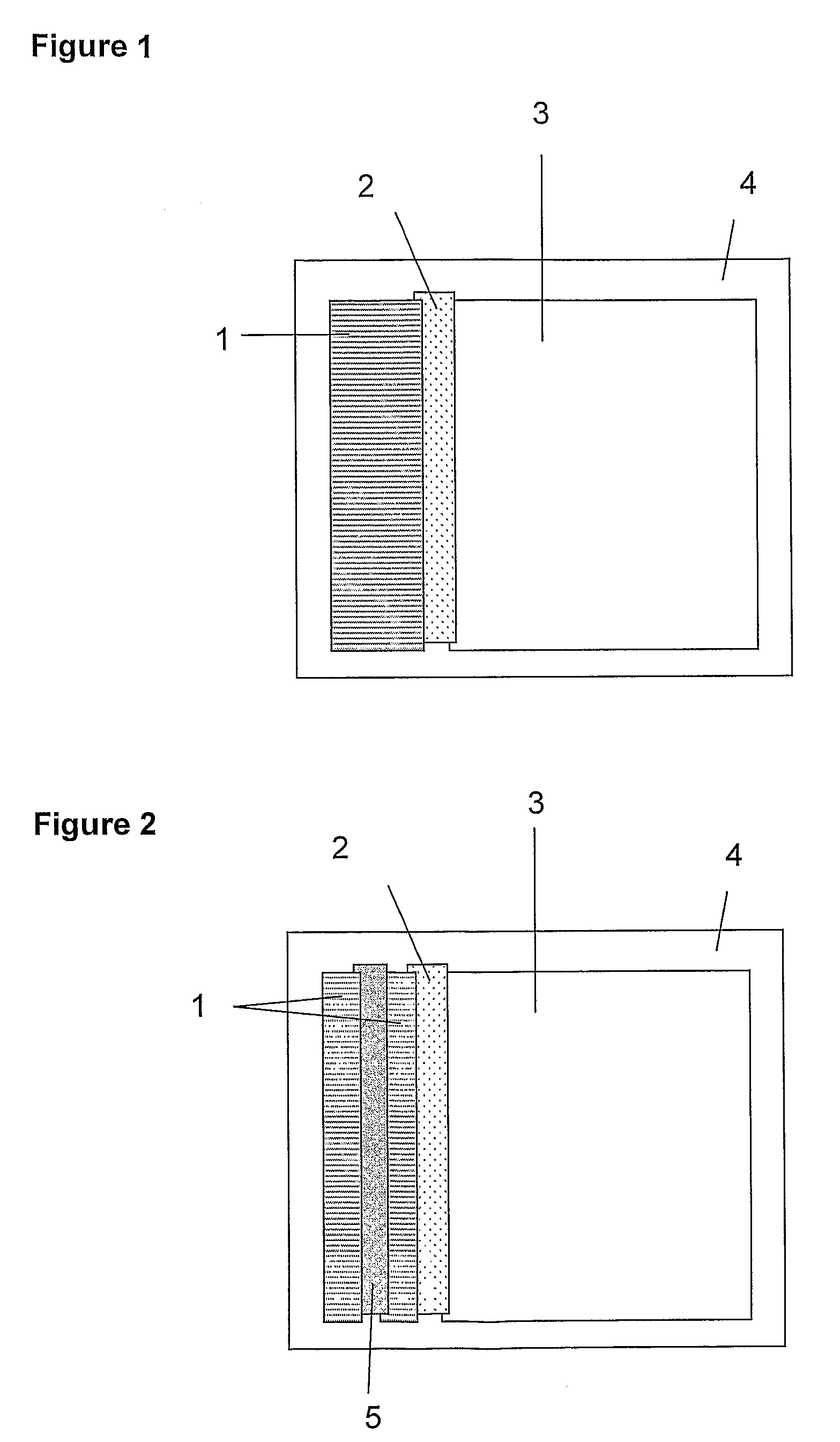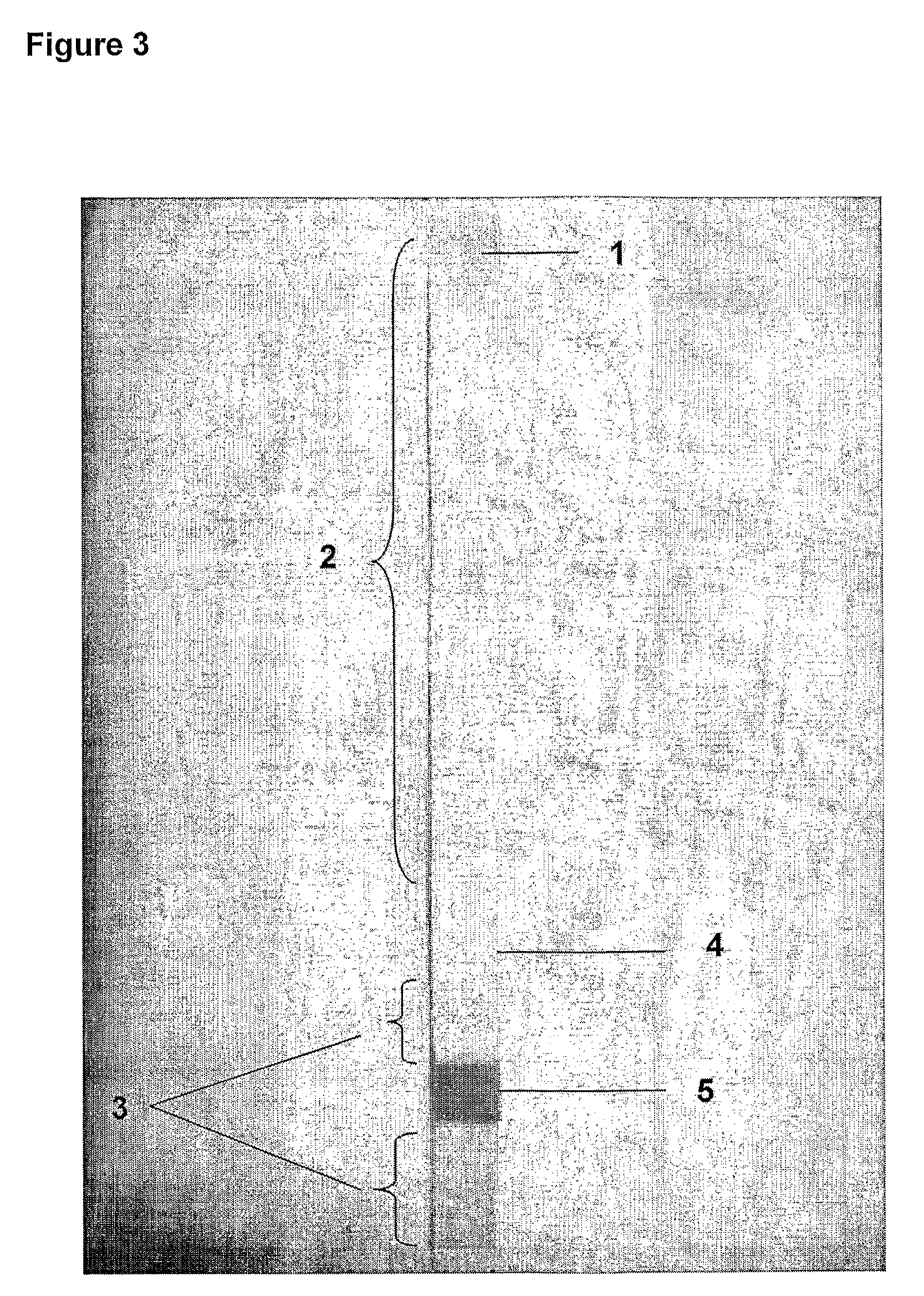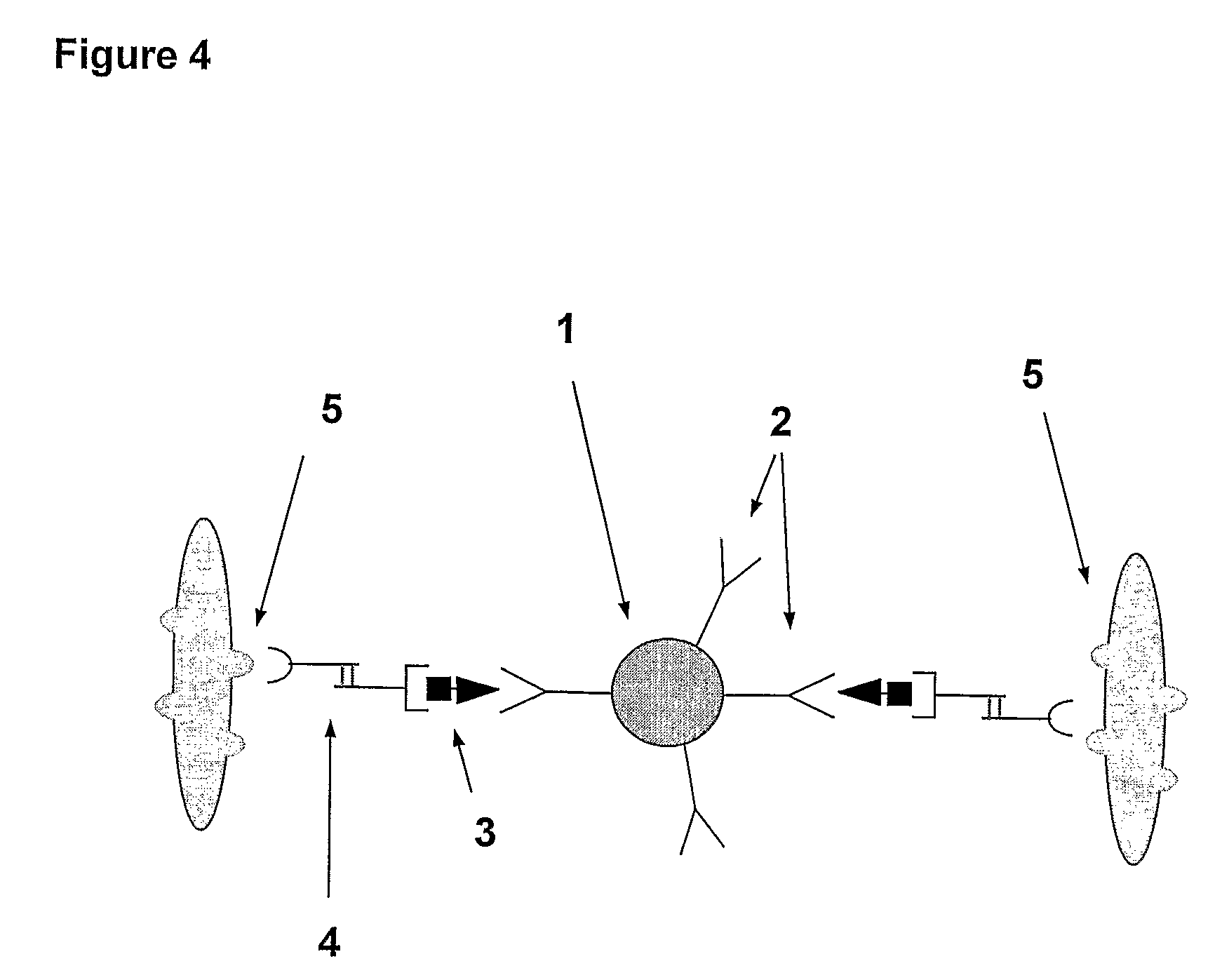Agglutination assay
a technology of agglutination and assay, which is applied in the field of agglutination assay, can solve the problems of difficult to achieve stable agglutination with smaller analytes
- Summary
- Abstract
- Description
- Claims
- Application Information
AI Technical Summary
Benefits of technology
Problems solved by technology
Method used
Image
Examples
example 1
Preparation of Soluble Hub Reagent 1
[0133]1. Desalt the anti-hCG (alpha-subunit) into 0.1 M phosphate pH 7.5 buffer, using a 1.6×15 cm G25M Sephadex column, and determine concentration and yield.
[0134]2. Activate the anti-hCG antibody, using 8 molar equivalents of NHS-PEG-MAL. Incubate the reaction mixture at 20° C. for two hours. Quench the reaction with 100 molar equivalents of glycine and desalt the maleimide-activated anti-hCG into 5 mM EDTA, PBS pH 7.3 buffer using two shots down a 1.6×15 cm G50F Sephadex column. Determine concentration and yield of activated antibody.
[0135]3. Activate a 500 kDalton aminodextran using 1000 molar equivalents of 2-Iminothiolane (2-IT). Incubate the reaction mixture at 20° C. for 110 minutes. Desalt the thiol activated aminodextran into 5 mM EDTA, PBS pH 7.3 buffer, using G25M Sephadex media. Determine incorporation ratio of thiol:aminodextran using the Ellman's assay.
[0136]4. Add 25 Molar equivalents of the maleimide-activated anti-hCG antibody t...
example 2
Preparation of Soluble Hub Reagent 2
[0137]1. Desalt the anti-hCG (alpha-subunit) into 0.1 M phosphate pH 7.5 buffer, using a 1.6×15 cm G25M Sephadex column, and determine concentration and yield.
[0138]2. Activate the anti-hCG antibody, using 8 molar equivalents of NHS-PEG-MAL. Incubate the reaction mixture at 20° C. for two hours. Quench the reaction with 100 molar equivalents of glycine and desalt the maleimide-activated anti-hCG into 5 mM EDTA, PBS pH 7.3 buffer using two shots down a 1.6×15 cm G50F Sephadex column. Determine concentration and yield of activated antibody.
[0139]3. Activate a 500 kDalton aminodextran using 1000 molar equivalents of 2-Iminothiolane (2-IT). Incubate the reaction mixture at 20° C. for 110 minutes. Desalt the thiol activated aminodextran into 5 mM EDTA, PBS pH 7.3 buffer, using G25M Sephadex media. Determine incorporation ratio of thiol:aminodextran using the Ellman's assay.
[0140]4. Add 25 Molar equivalents of the maleimide-activated anti-hCG antibody t...
example 3
Preparation of Membrane Strips for Tests Using Wet Reagents
[0142]Membrane materials were cut to size as follows:[0143](i) Wick, e.g. Surewick G028-14 (Millipore), 30 mm×60 mm.[0144](ii) Agglutinate trapping membrane, e.g. Fusion 5 (Whatman), 5 mm×60 mm.[0145](iii) Absorbent sink, e.g. Absorbent Pad 222 (Ahlstrom), 55 mm×60 mm.[0146](iv) Self-adhesive plastic (×2) e.g. 0.04″ Clear polyester with D / C hydrophilic PSA (G&L) 70 mm×100 mm
[0147]A composite ‘card’ of the above materials was assembled as shown in FIG. 1. Adjacent membrane materials were overlapped by approximately 1 mm, to ensure good fluid transfer between successive sections of the strip. The second sheet of self-adhesive plastic was applied firmly to the upper surface. The resulting ‘card’ was sliced into 5 mm strips and the plastic trimmed to allow reagents and sample to enter the wick.
PUM
| Property | Measurement | Unit |
|---|---|---|
| diameter | aaaaa | aaaaa |
| diameter | aaaaa | aaaaa |
| length | aaaaa | aaaaa |
Abstract
Description
Claims
Application Information
 Login to View More
Login to View More - R&D
- Intellectual Property
- Life Sciences
- Materials
- Tech Scout
- Unparalleled Data Quality
- Higher Quality Content
- 60% Fewer Hallucinations
Browse by: Latest US Patents, China's latest patents, Technical Efficacy Thesaurus, Application Domain, Technology Topic, Popular Technical Reports.
© 2025 PatSnap. All rights reserved.Legal|Privacy policy|Modern Slavery Act Transparency Statement|Sitemap|About US| Contact US: help@patsnap.com



